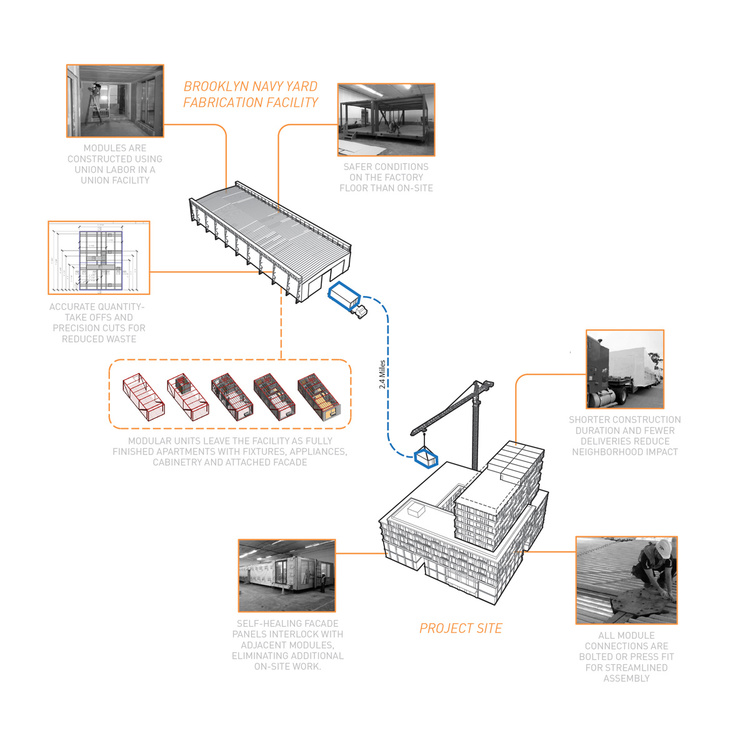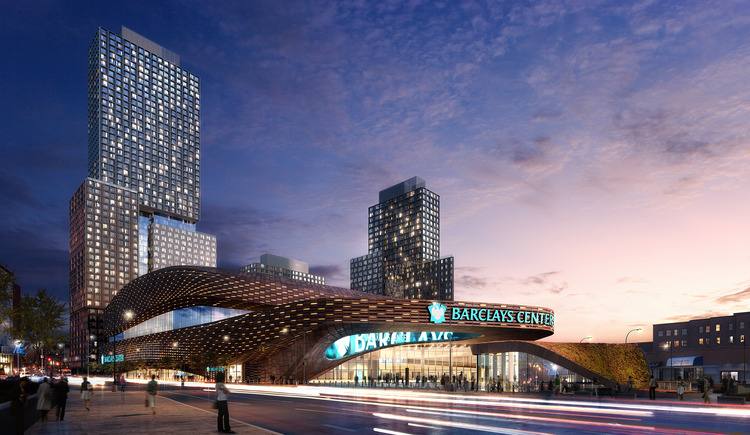
Since the 1870 introduction of the elevator transformed New York from a city of walk-ups to a city of high-rises, we have seen remarkably little change in the construction industry, even as we have developed better materials, more sophisticated technology, and a smarter means of enhancing building safety.
Modular construction can transform how we build affordable and market-rate buildings with greater savings and a diminished impact on the community and the environment. At our first high-rise project at Atlantic Yards, we found that we can use a modern means of construction while embracing sustainability and delivering on world-class architecture.
Modular units can be built in an off-site facility with all final finishes installed, like flooring, fixtures, appliances, and facades. And because modules are built indoors without risk of height hazards or inclement weather, we can forge new partnerships with union labor to build more safely and cost-effectively. Once on site, modules can be bolted or press-fit together and facades are designed to lock into one another without any on-site work. And because modular buildings are assembled faster, the community is less impacted by construction noise and traffic.
This new means of construction could be a critical component of a greater strategy to address affordable housing in this city. At our Atlantic Yards project, we estimate that modular construction will generate 20%+ savings on a compressed timeline. We estimate 70-90% less waste and 67% lower energy consumption. By using modular construction to build quickly, densely, affordably, and sustainably, we can radically shift how we build great cities.
